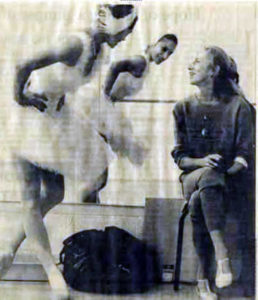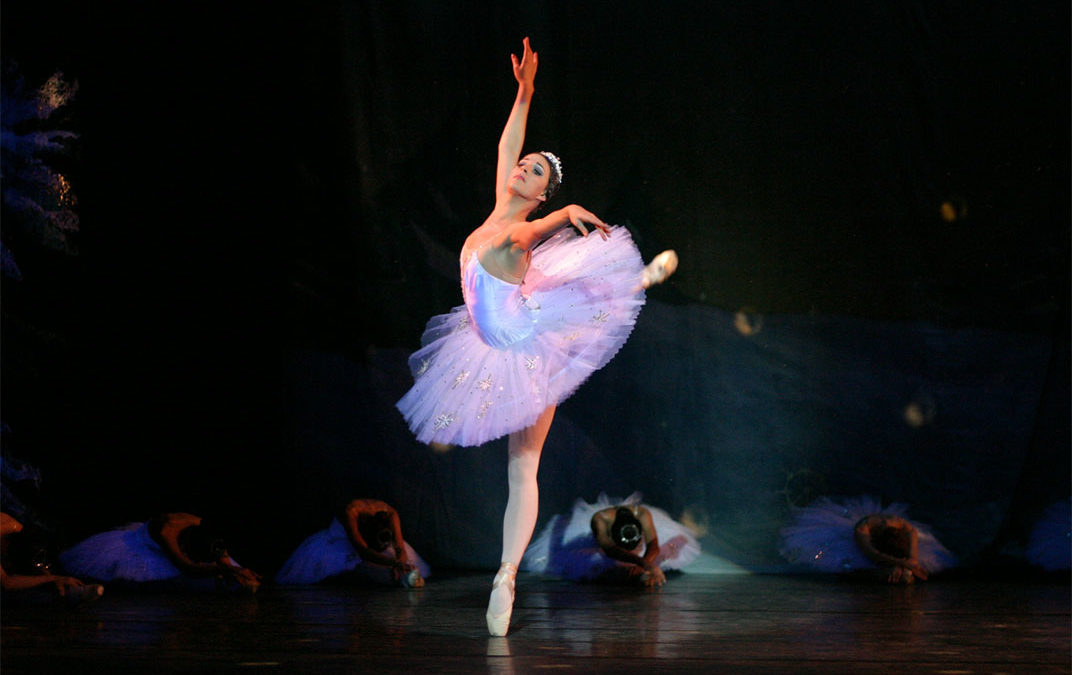The Vaganova Method at a Toronto Ballet School
The Vaganova Method of ballet is known as the best ballet practice in the world. At the Academy of Ballet and Jazz, School of Canadian Ballet Theatre, artistic director, Nadia Veselova Tencer, utilizes the Vaganova Method for teaching her Toronto ballet students. Why is this method the best ballet practice in the world though? And how does this make the Academy of Ballet and Jazz the best ballet school in Toronto?
Here, we look at what makes the Vaganova Method of ballet theatre such an accoladed practice, and how it is so connected to the Academy of Ballet and Jazz.
Who is Vaganova?
Agrippina Vaganova was trained at the Imperial Ballet School (IBS) in Soviet Russia in the late 19th Century. The technique she developed there and afterwards as a teacher, the Vaganova Method, joins aspects of the traditional French style of ballet with the athleticism of Italian techniques and the smooth arm movement from the IBS. The IBS is now known as the Vaganova Ballet Academy, after the leaps and bounds of evolution that Vaganova’s technique and her abilities as a teacher provided the world of ballet.
What is the Vaganova Method?
In 1934, Vaganova published Fundamentals of the Classical Dance. The main intent of the work was to provide a more systematic approach to learning ballet than what was common at the time. Properly structuring a ballet education, the book outlined Vaganova’s process, which she catered to account for variables such as the age of the dancer, their workload, and their own individual strengths.
The method emphasizes a balance of the dancer’s attention to their movements through every muscle across the entire body. With a focus on the body as a whole, rather than as separate limbs and muscles, the method pushes the dancer towards a more complete ballet experience. The dancer immerses themselves in a consciousness of their bodies and movement that produces a superior harmony of the body and increased expression.
An important part of the success is also due to the focus on performance itself: no matter how difficult the movement, a key to success was that the dancer’s efforts were not visible. What was key was the ability to make everything look easy.
Soaring leaps, high extensions, synchronistic movement – everything about the dancer’s ballet was given a boost of powerful expression when engaged in the Vaganova Method. It seemed a superior form of ballet.
With some of the world’s most renowned ballet superstars coming from the Vaganova school of ballet (e.g., Galina Ulanova, Maya Plisetskaya, Mikhail Baryshnikov, Irina Kolpakova, Farukh Ruzimatov, Diana Vishneva, Rudolf Nureyev, Igor Kolb, Ulyana Lopatkina, Ivan Vasilev, and Svetlana Zakharova), the method has proved to be a giant force in the world of ballet.
Why the Academy of Ballet and Jazz?
Nadia Veselova Tencer is one of the greatest teachers of the Vaganova Method around today. She has worked with some of the world’s greatest ballet superstars of their generation, such as Tatyana Terekhova, Amanda McKerrow, Mark Peretokin, Elena Andrienko, Valdimir Malakhov, Roberto Bolle, Sabrina Brazzo, Jose Martinez, and Karen Kain, to name but a few. Tencer is a superstar in her own right, but her greatest strength is as a teacher.
 Tencer’s own teacher, Alla Ossipenko, studied directly under Agrippina Vaganova, and was her own force in the world of ballet. Ossipenko, now in her late 80s, in fact served as a guest teacher at the Academy of Ballet and Jazz in its early years.
Tencer’s own teacher, Alla Ossipenko, studied directly under Agrippina Vaganova, and was her own force in the world of ballet. Ossipenko, now in her late 80s, in fact served as a guest teacher at the Academy of Ballet and Jazz in its early years.
Ossipenko’s partner, Rudolf Nureyev, was also trained under the Vaganova Method and became the greatest male ballet dancer of his generation. In 1995, after Nureyev’s death, Tencer joined her husband, Solomon Tencer, in hosting a Gala Tribute to Rudolf Nureyev at the O’Keefe Center (now the Sony Center) in Toronto.
The gala featured world ballet superstars from the Kirov Ballet, American Ballet Theater, the New York City Ballet, the Royal Ballet of England, the Royal Danish Ballet, the National Ballet of Canada, the Bolshoi Ballet, the Ballet National de Marseilles Roland Petit, La Scala di Milano, Stuttgard Ballet, the Vienna State Opera Ballet, and étoiles from L’Opéra de Paris, as well as other international guest artists and ballet superstars.
Tencer’s connection and knowledge of the Vaganova Method runs incredibly deep, and her respect in the ballet industry is enormous. The recipient of numerous awards as a dancer and a teacher, Tencer has also been a judge at some of the most prestigious ballet competitions in the world.
- Graduate of the Kirov Ballet, St. Petersburg
- Outstanding Teacher, Youth American Grand Prix, 2009
- Brilliance of the 21st Century Medal, New York, 2007
- Golden Soffit Award, St. Petersbrg, Russia 1995-1996
- Judge and Choreographer at the Youth American Grand Prix, New York, U.S.A.
- Judge at Prix Benois de la Danse, Bolshoi Theatre, Moscow
Go here for a complete bio on Nadia Veselova Tencer.
Nadia Veselova Tencer’s experience with ballet and the Vaganova Method has made her teaching abilities unprecedented, and brings this to her students at the Toronto ballet school. The Vaganova Method, and Tencer’s experience and ability to teach it, are important reasons why the Academy of Ballet and Jazz has established itself as the best ballet school in Toronto, and an internationally renowned school at that.
For information on classes and programs at the Academy of Ballet and Jazz, take a look at the schedules here.

